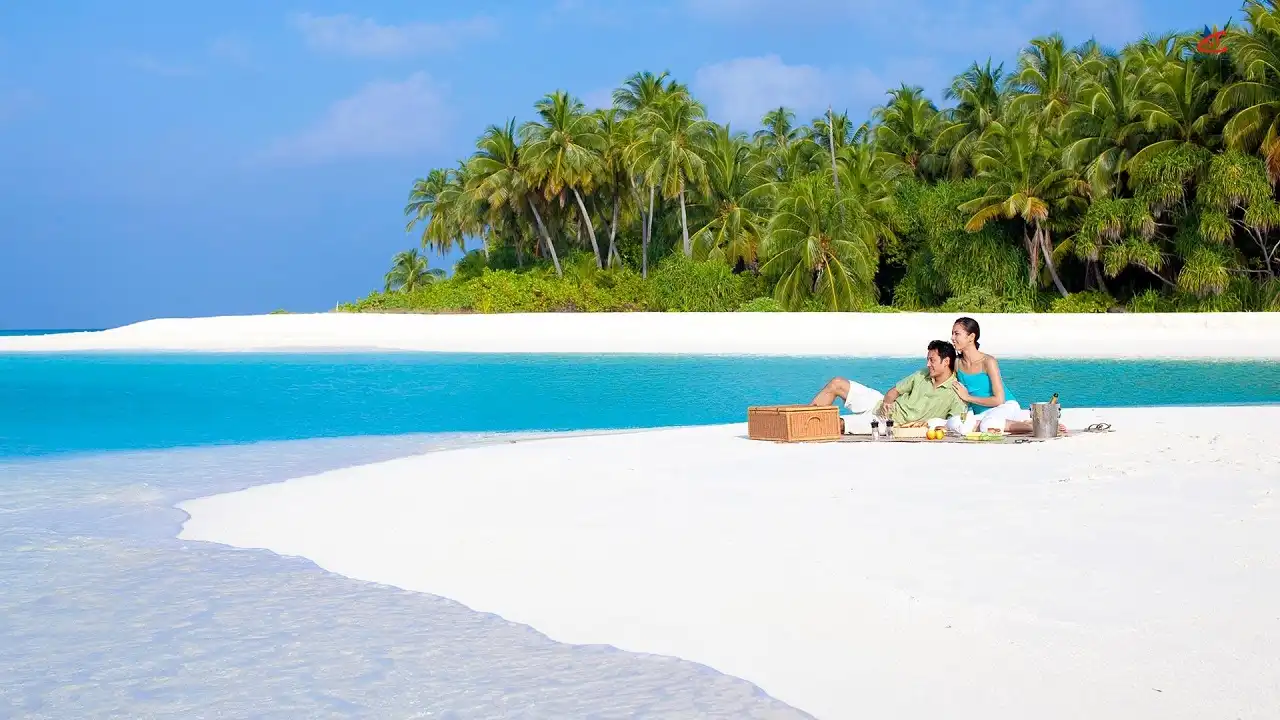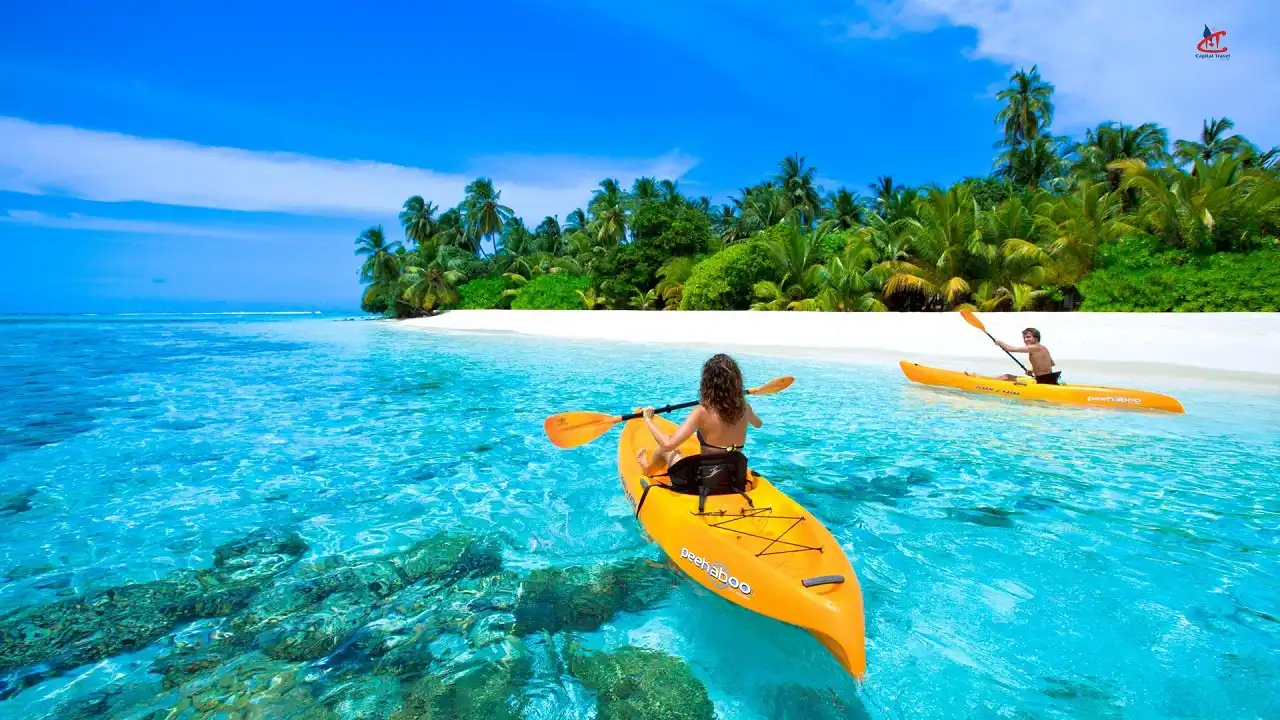
Perfect sunny day at Baros Maldives during the dry season
Planning your dream Maldives vacation? Understanding the weather patterns is essential for choosing the perfect time to visit this tropical paradise. While the Maldives enjoys warm temperatures year-round, distinct seasonal variations in rainfall, humidity, and wind can significantly impact your experience. Our comprehensive weather guide provides detailed month-by-month climate information to help you plan the ideal Maldives getaway based on your preferences and priorities.
The Maldives enjoys a tropical monsoon climate with two distinct seasons:
When: December to April
Characteristics:
Best for: Beach activities, water sports, honeymoons, photography
When: May to November
Characteristics:
Best for: Budget travel, surfing, fewer crowds, marine life encounters
Average temperature (°C) and rainfall (mm) by month
Average daily sunshine hours and humidity (%) by month
January offers idyllic conditions with clear skies, calm seas, and minimal rainfall. This is peak season with perfect weather for all beach and water activities. Underwater visibility is excellent (20-30m), making it ideal for snorkeling and diving. Expect higher prices and more crowded resorts during this prime month.
Best for: Beach perfection, water sports, honeymoons, underwater photography
February continues the perfect weather trend with even less rainfall than January. This is the driest month of the year in the Maldives, with abundant sunshine and excellent visibility for underwater activities. The calm seas make it perfect for all water sports and excursions. February is one of the most popular months, so book well in advance and expect premium pricing.
Best for: Guaranteed sunshine, diving, snorkeling, romantic getaways
Best months: January-April for eastern atolls, May-November for western atolls
Weather factors:
Pro tip: For manta ray encounters, visit Hanifaru Bay (Baa Atoll) between June and November when southwest monsoon currents funnel plankton into the bay.
Best months: April-October (peak: June-August)
Weather factors:
Pro tip: The best surf breaks are concentrated in the North and South Male Atolls, with spots like Cokes, Chickens, Sultans, and Jailbreaks offering excellent conditions during the southwest monsoon.
Don't let the term "wet season" discourage you. Even during the southwest monsoon, rain typically comes in short, intense bursts rather than all-day downpours. Mornings are often clear, with afternoon showers being more common. Most rain falls between 2-5pm, leaving plenty of time for morning activities and beautiful sunset views after the rain clears.
The Maldives spans almost 900km from north to south, resulting in noticeable climate variations. Southern atolls typically receive more rainfall throughout the year compared to northern atolls. During the southwest monsoon, the northern atolls may experience better weather than the southern regions, making them a better choice for travel during May-November.
Humidity remains high year-round (75-90%), but feels more comfortable during the northeast monsoon due to lower rainfall and steady breezes. To manage humidity, choose accommodations with good air conditioning, pack lightweight, breathable clothing, and stay hydrated. Overwater villas typically feel less humid than beach villas due to better air circulation.
Ideal months: January-April
The dry season offers the most reliable sunshine, lowest rainfall, and clearest skies. This period provides picture-perfect conditions for beach activities and photography with vibrant blue waters and clear skies. February is particularly excellent with the lowest rainfall of the year.
Ideal months: May-June, September-November
These shoulder season months offer the best value with significantly lower prices (30-40% less than peak season) while still providing good weather with intermittent sunshine. May and November are transition months that can offer excellent weather at reduced rates.
Ideal months: For visibility: January-April; For marine life: June-November
The choice depends on your priorities. The dry season offers better visibility (20-30m), while the wet season brings nutrient-rich waters that attract manta rays and whale sharks, particularly in Baa Atoll (June-November) and South Ari Atoll (year-round but peaking during southwest monsoon).
Ideal months: May-October (peak: June-August)
The southwest monsoon generates consistent swells that create excellent surfing conditions, particularly in North and South Male Atolls. June through August offers the most reliable waves with offshore winds at many breaks.
No, the Maldives does not experience hurricanes or typhoons (known as cyclones in the Indian Ocean). The country's location near the equator (between 7°N and 0°41'S latitude) places it outside the main cyclone belt. While the southwest monsoon brings increased rainfall and occasionally stormy conditions, these are not comparable to the destructive cyclones that affect other parts of the Indian Ocean. This makes the Maldives a year-round destination without the severe weather risks found in some other tropical locations like the Caribbean or Southeast Asia.
The wet season (May-November) offers several advantages that make it an attractive time to visit. First, prices are significantly lower, with resorts offering discounts of 30-50% compared to peak season. Second, rainfall typically occurs in short bursts rather than all-day downpours, with plenty of sunshine between showers. Third, this season brings specific natural phenomena like manta ray aggregations in Baa Atoll and better surfing conditions. The increased cloud cover can also make the heat more bearable and create spectacular sunsets. For budget-conscious travelers willing to accept the possibility of some rain showers, the wet season represents excellent value.
The Maldives maintains remarkably consistent temperatures year-round, with daily highs typically ranging between 29-31°C (84-88°F) and nighttime lows rarely dropping below 25°C (77°F). March and April are generally the hottest months, when temperatures can occasionally reach 32-33°C (90-91°F). The heat is moderated by ocean breezes, particularly in overwater villas. The real feel temperature is influenced more by humidity levels than actual temperature variations. During the dry season (December-April), lower humidity makes the heat more comfortable, while the wet season's higher humidity can make it feel hotter despite similar actual temperatures. Sea temperatures remain warm and inviting year-round, ranging from 27-30°C (81-86°F).
For both seasons, pack lightweight, breathable clothing, swimwear, sun protection (high SPF sunscreen, hat, sunglasses), and reef-safe sunscreen. For the dry season (December-April), focus more on sun protection with stronger sunscreen, UV-protective clothing, and after-sun care for longer sun exposure. For the wet season (May-November), add a light rain jacket or poncho, water-resistant phone case, and quick-dry clothing. Consider bringing anti-humidity hair products and extra changes of clothes during the wet season. Regardless of season, pack modest clothing for visits to local islands (shoulders and knees covered) and insect repellent for evenings. Most resorts are casual, so formal wear is rarely needed unless specifically mentioned by your accommodation.
Climate change is increasingly impacting the Maldives' weather patterns in several ways. Rising sea temperatures have led to more frequent coral bleaching events, particularly during El Niño years. Monsoon patterns are becoming less predictable, with the traditional dry and wet seasons showing more variability. Some years have seen unusually heavy rainfall during the traditional dry season, while drought-like conditions have occasionally occurred during the wet season. Sea level rise remains the most significant long-term threat, with the low-lying nation (average elevation of 1.5 meters) particularly vulnerable. Many resorts have implemented coral restoration programs, water conservation measures, and renewable energy systems to mitigate their environmental impact. Travelers can contribute by choosing eco-conscious resorts, minimizing plastic use, and participating in coral planting or reef cleanup activities.
The Maldives offers a tropical paradise experience year-round, with each season providing its own unique advantages. While the dry season (December-April) delivers the picture-perfect weather most associated with Maldives marketing materials, the wet season (May-November) offers excellent value, fewer crowds, and special natural phenomena like manta ray aggregations.
When planning your trip, consider your priorities—whether that's guaranteed sunshine, budget considerations, specific activities like diving or surfing, or witnessing particular marine life events. The good news is that even during the wet season, rain typically comes in short bursts rather than prolonged periods, and the warm temperatures ensure that the Maldives remains a delightful destination regardless of when you visit.
For the ideal balance of good weather and value, consider the shoulder months of April-May or November, when you might enjoy dry season conditions at wet season prices. Whichever season you choose, the Maldives' turquoise waters, white sand beaches, and abundant marine life await to create memories that will last a lifetime.



